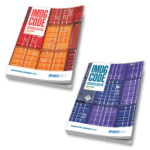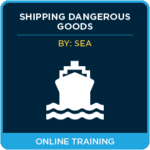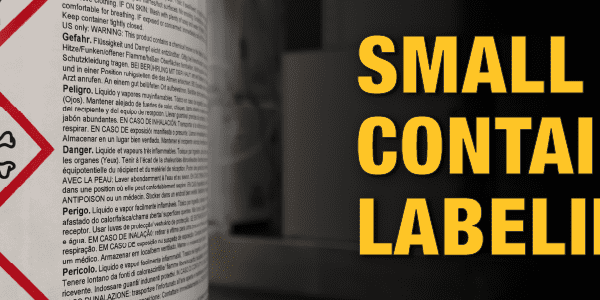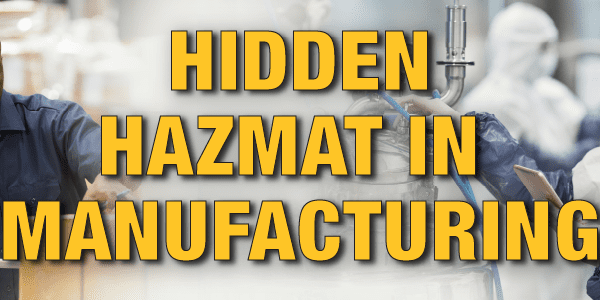
When people think about dangerous goods, they usually think about things like dynamite. Ebola virus. Radioactives glowing greenly in the back of a truck in your favorite action movie. They don’t usually think about nurdles.
In fact, most people don’t even know what nurdles are. Let alone why they’re one of the thorniest dangerous goods transport issues to come up for some time.
First, what exactly is a nurdle? The answer doesn’t seem so scary. Wikipedia calls it “a plastic pellet smaller than 5mm used in plastics industry in the manufacture of plastic products,” also known as a pre-production plastic pellet. They’re used as the starting material for many plastic items created using the plastic extrusion or injection molding processes. Have a plastic water bottle nearby? A plastic shopping bag? Anything, really, made of polyethylene, polypropylene, or polystyrene? They started life as the humble nurdle, a tiny pellet of plastic with dreams of becoming something bigger one day.
As such, nurdles sound pretty innocuous – until you consider the ecological impact of microplastics. Ocean Blue Project calls their environmental damage “giant and immeasurable.”
These tiny beads can interfere with the food chain of aquatic organisms. For example, small fish may eat them, thinking they’re food, and eventually starve with stomachs stuffed with nurdles. Even worse, nurdles can absorb toxic material while they’re waiting to become a minnow’s lunch, and pass those toxins on to wildlife, accelerating the buildup of ecotoxins in the food chain. This cannot just harm wildlife, but end up poisoning humans as well.
This still wouldn’t be too bad if nurdles would stay where they were supposed to. But huge amounts of them are transported to factories all over the world, often by water. It’s been estimated that at least 25,000 tonnes of nurdles are released into the oceans every year. And since, like most plastics, they’re highly resistant to breaking down in the environment, more and more nurdle pollution contaminates our waters. These tiny, floating pellets can cause environmental disaster when a huge ocean container ship loses their cargo. When in 2020 the MV Trans Carrier lost 47,000 kilograms of nurdles off Norway, this meant the release of about 470,000,000 tiny plastic fragments. In 2021, when the X-Press Pearl container ship released perhaps the largest nurdle spill of all time, along the coast of Sri Lanka, the rogue pellets were considered to be a bigger environmental crisis than other cargo on board such as corrosives and the toxic chemical methanol.
So, many countries concerned about protecting their coasts have taken the issue to the International Maritime Organization. In a paper to the Sub-committee on Pollution Prevention and Response, countries such as the Cook Islands, Jamaica, Monaco, Norway, Palau, and United Arab Emirates proposed that nurdles be classified as dangerous goods, and be regulated under the International Maritime Dangerous Goods Code (IMDG Code). Classed as environmental hazards under UN3077, ENVIRONMENTALLY HAZARDOUS SUBSTANCES, SOLID, N.O.S., they would be regulated as Class 9, Miscellaneous Dangerous Goods. This would ensure that they were safely packaged and stowed when on board ocean-going vessels, and be placarded and documented to warn carriers of their danger. It would also establish liability for compensation for damage caused by nurdle spills under the International Convention on Liability and Compensation for Damage in Connection with the carriage of Hazardous and Noxious Substances by Sea (HNS).
The proposal further asked for emergency short-term measures to be taken, as well as discussion on whether it was even safe to continue shipping nurdles as bulk cargo by ocean.
Sounds good, right? The problem is, nearly all the plastics manufactured today start off as nurdles. Shipping them as dangerous goods would significantly increase costs for the manufacturer of nurdles, the carriers, and plastic manufacturers in general. And as we all know, these costs would ultimately be borne by consumers of plastic items.
It’s not yet known what the outcome will be of the proposal. Undoubtedly it will be a struggle between concern for the environment versus the economic effect of regulating nurdles. But even when unregulated, the tiny but hazardous nurdle has created major costs for clean-ups and general environmental degradation.
Do you have questions regarding what sort of products are dangerous goods for ocean transport? Some of them may surprise you! Get help on your IMDG Code shipments from our regulatory experts at 1-888-442-9628 (USA) and 1-888-977-4834 (Canada). We’ll be happy to help you determine the best way to ship your products, whether by ocean, air, or ground.
Sources:
Parley for the Oceans, Science vs `: Nurdles
Ocean Blue Project, What are Nurdles – Why You Need to Worry about Them
The Atlantic, The Lost Nurdles Polluting Texas Beaches
Wikipedia, Nurdle (bead)
KIMO International, Plastic Pellets Spill pollutes Danish, Norwegian, Swedish Coastlines
The Global Economics, Nurdles: Sri Lanka’s worst maritime calamity came from the spilling of 87 containers full of nurdles
Subcommittee on Pollution Prevention and Response, Agenda Item 15, Proposed amendments to the criteria for the identification of harmful substances in package form – Classification of plastic pellets
Stay up to date and sign up for our newsletter!
We have all the products, services and training you need to ensure your staff is properly trained and informed.

|
 Shipping Dangerous Goods by Sea (IMDG Code) |
 Environmentally Hazardous Substance Label, 4″ x 4″, Thermalabel, 500/Roll |






 ICC USA
ICC USA ICC Canada
ICC Canada